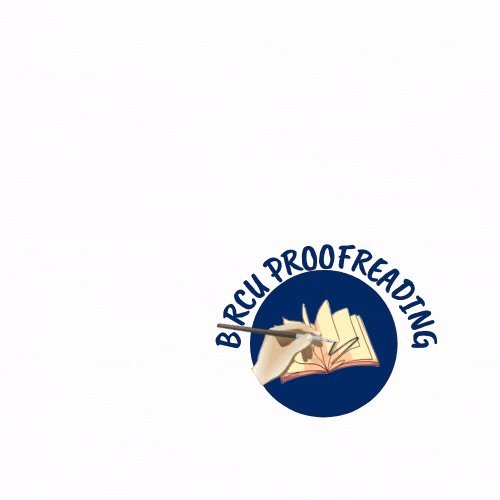Christians Labeled as Kafir in Indonesia: Is it an Apodictic Stance of Muslim?
Abstract
This paper addresses the issue of whether the kafir label for Christians in Indonesia is an apodictic stance of Muslims. The kafir label for Christians is grounded on the Al-Maidah 5:73 and Al-Maidah 5:17. These two texts indicate that those who believe in “Allah is the third of the three,” (Al-Maidah 5:73) and “God is the Messiah, son of Maryam” (Al-Maidah 5:17) are considered as “disbelievers” (kafir). This paper investigates the scholarly works of Muslims to answer the question. The following are the conclusions. First, Muslim scholars mostly disagree to affirm that these two texts attest that Christians are kafir. Christians believe in one God (monotheism) and this tenet is not the same as believing in the three Gods (polytheism) as Muslims have ascribed to Christians. Besides, Christians believe that Jesus is God, and this belief has been reiterated by the few texts of the Qur’an. Thus, if the kafir label for Christians is due to their tenet of the Trinity, it contradicts the biblical theology. Second, Muslim expositors ignore the literal context in the exposition of the two texts. The literal context of two texts has affirmed that Jesus is God and the Ruler of this universe. If the ground of the kafir label is due to the Christian tenet that Jesus is God, it devastates the biblical theology and the Qur’an per se. Thus, the kafir label for Christians at this point emerged from the superficial hermeneutic of Al-Maidah 5:73 and Al-Maidah 5:17. In the Indonesian context, the disaffirmation for the kafir label is incorporated by the prohibition of Nahdlatul Ulama, the largest Islam organization, to stigmatize kafir for Christians.
Keywords
Full Text:
PDFReferences
Abu Rabi, Ibrahim. “Christian-Muslim Relations in Indonesia: Five Challenges of the Twenty-First Century.” Studia Islamica: Indonesian Journal for Islamic Studies 5 (1998): 1-2.
Abubakar, Irfan, and Muhamad Nabil. Kaum Muda Muslim Milenial: Hibridasi Kultural, Konservatisme, dan Tantangan Radikalisme. Jakarta, Indonesia: CSRUC UIN Jakarta, 2018.
Aisyah, Fitriani and Siti. “Konsep Kafir dalam Pandangan Nahdlatul Ulama (NU) dan Forum Umat Islam (FUI) Sumatera Utara.” Journal Studi-Studi Agama 2 (2019): 40.
Akbar, Muhammad Nabiel. “Makna Kafir dalam Tafsir Al-Mishbah Karya M. Quraish Shihab.” Skripsi. Jawa Tengah, Indonesia: Universitas Muhammadyiah Surakarta, 2018.
Alfian, Anang G. Forum Report: Center for Religious and Cross-Culture Studies. Graduate School, Universitas Gajah Madah. Accessed 2020. https://crcs.ugm.ac.id/the-christianity-addressed-in-the-quran/. Quoted in Mun’im Sirry, “Islamic Christology.” CRCS-ICRS Forum, September 27, 2017.
Al-Hilali, Muhammad Taqi-ud-Din. Translation of the Meanings of the Noble Qur’an. Madinah, KSA: King Fahd Complex, n.d.
Al-Hilali, Muhammad Taqi-ud-Din, and Muhammad Muhsin Khan. Translation of the Meanings of the Noble Qur’an in the English Language. Madinah, KSA: King Fahd Complex, n.d.
Al-Qaradhawi, Yusuf. As-sahwah al-Islamyyah bayna al-Juhud wa at-Tattaruf. Cairo, Egypt: Dar asy-Syuruq, 2021.
Al-Tafahum, Abd. “Doctrine.” In Islam, edited by A. J. Arberry, 2:390-392. Cambridge, UK: Cambridge University Press, 1969.
Arifianto, Alexander R. “Explaining the Cause of Muslim-Christian Conflicts in Indonesia: Tracing the Origins of Kristenisasi and Islamisasi.” Islam and Christian-Muslim Relations 20 (2010): 73-89.
Aritonang, Jan. S. Sejarah Perjumpaan Kristen dan Isalam di Indonesia. Jakarta, Indonesia: BPK Gunung Mulia, 2004.
Arnold, Bill T., and John H. Choi. A Guide to Biblical Hebrew Syntax. UK: Cambridge University Press, 2003.
Astuti, R.W., Waluyo, H.J., and Rohmadi, M. (2019). Character Education Values in Animation Movie of Nussa and Rarra. Budapest International Research and Critics Institute-Journal (BIRCI-Journal). P. 215-219.
Azra, Azyumardi. “Islam and Christianity in Indonesia: The Roots of Conflict and Hostility.” In Religion and Culture in Asia Pacific:Violence or Healing?, edited by Joseph A. Camillery, xv. Carlton South, Australia: Paz Christi & Vista, 2002.
Bakhtiar, Laleh. “The Sublime Quran: The Misinterpretation of Chapter 4 verse 34.” European Journal of Woman Studies 18 (2011): 431-430.
Bible Works, version 10
Brown, Peter. “Pagan.” Late Antiquity: A Guide to the Postclassical World. Edited by Glen Warren Bowersock, Peter Robert Lamont Brown, and Oleg Grabar. 1999. 187-188.
Brown, Peter. “Pagan,” Late Antiquity: A Guide to the Postclassical World, ed. Glen Warren Bowersock, Peter Robert Lamont Brown, and Oleg Grabar. (Harvard University Press, 1999), 187-188.
Budiyono. “Hubungan Negara dan Agama dalam Negara Pancasila.” Fiat Justicia Journal Ilmu Hukum 8 (2014): 418-422.
Bull, Victoria, ed. Oxford Dictionary. UK: Oxford University Press, 2008.
Bultmann, Rudolph. “Aidōs.” Theological Dictionary of the New Testament. Edited by Gerhard Kittel and Gerhard Friedrich. Translated by Geoffrey W. Bromiley. Grand Rapids: Eerdmans, 1964-1976. 1:169-171
Cameron, Allan G., Jacqueline Long, and Lee Sherry. “Synesius of Cyrene VI: The Dion.” In Barbarians and Politics at the Court of Arcadius, 66-67. CA: University of California Press, 1993.
Canale, Fernando L. “Doctrine of God.” In Handbook of Seventh-day Adventist Theology, edited by George W. Reid. Hagerstown, MD: Review & Herald, 2000.
Charles, J. D. “Pagan Sources in the New Testament.” In Dictionary of New Testament Background, edited by Craig A. Evans and Stanley E. Porter, 757. Downers Grove, IL: Inter-Varsity, 2000.
Cole, Juan. “Infidel or Paganus? The Polysemy of Kafara in the Quran.” Journal of the American Oriental Society 140 (2020): 615.
Davies, Owen. Paganism: A Very Short Introduction. Clarendon, Oxford: Oxford University Press, 2011.
Dodge, Christine Huda. The Everything Understanding Islam Book. Translated by H. Moh Anwar. Jakarta, Indonesia: Karisma, 2004.
Eck, Diana L. A New Religious America: How a Christian Country Has Become the World’s Most Religiously Diverse Nation. New York, NY: HarperCollins, 2002.
Elwel, W. A., and B. J. Beitzel. Baker Encyclopedia of the Bible. Grand Rapids, MI: Baker, 1998.
Erickson, Millard J. Christian Theology. Grand Rapids, MI: Baker, 2017.
Ghazoul, Ferial J. “Humanising Islam's Message and Messenger in Postcolonial Literature.” Journal of Qur'anic Studies 16 (2014): 196-215.
Gingrich, F. Wilbur, and F. Arndt William. A Greek-English Lexicon of the New Testament and Other Early Christian Literature. Chicago, IL: Cambridge University Press, 1957.
Goldstone, Matthew. “Murder, Anger, and Altars.” Novum Testamentum 59 (2017): 339-354.
Gulley, Norman R. “Trinity in the Old Testament.” Journal of the Adventist Theological Society 17, no. 1, 2006: 80-97.
Hanegraaff, Wouter J. New Age Religion and Western Culture: Esotericism in the Mirror of Secular Thought. New York, NY: University of New York Press, 2006.
Hasan, Noorhaidi, Suhadi, Najib Kailani, and Munirul Ikhwan. Peta Literatur Keislaman Generasi Milenial: Ideologi dan Jaringan. Yogyakarta, Indonesia: Pasca Sarjana UIN Sunan Kalidjaga, 2018.
Hudaya, Muhammad. “Konsep Kafir dalam Tiga Agama Besar (Kristen, Yahudi, Islam).” Journal Studi Agama-Agama dan Pemikiran Islam 18 (2020): 165-168.
Hume, David. Philosophical Essays Concerning Human Understanding. London, UK: Millar, 1957.
________. “The Natural History of Religion.” In A Dissertation on the Passions: The Natural History of Religion. A Critical Edition, edited by T. L. Beauchamp, 30-87. Oxford, UK: Clarendon, 1957.
Hutchinson, J. A. Paths of Faith. New York, NY: McGraw Hill, 1981: 401-402.
Jamilah-Jamilah. “Pandangan Abdullah Wasi’an Terhadap Ketuhanan Agama Kristen.” Undergraduate thesis, IAIN Sunan Ampel-Surabaya, Indonesia, 2002. Accessed November 20, 2020. http://digilib.uinsby.ac.id/id/eprint/20488.
Kementerian dan Kebudayaan Indonesia. Kamus Besar Bahasa Indonesia. Jakarata, Indonesia: Balai Pustaka, 2016.
Kimball, Charles. When Religion Becomes Evil. New York, NY: HarperCollins, 2003.
Lewis, James. The Oxford Handbook of New Religious Movements. Oxford, UK: Oxford University Press, 2004.
Lunn, Nicholas. “Parables of the Lost?: Rhetorical Structure and the Section Headings of Luke 15.” The Bible Translator 60 (2009): 158-164.
Marcus, Joel. “Mark 14:61: Are You the Messiah-Son-of-God? ” Novum Testamentum 31 (1989): 125-141.
McAuliffe, Jane Dammen. “Christians in the Quran and Tafsir.” In Muslim Perceptions of Other Religions: A Historical Survey, edited by Jacques Waardenburg. Oxford, UK: Oxford University Press, 1999.
McIntosh, Colin, ed. Cambridge Advanced Dictionary. Cambridge, UK: Cambridge University Press, 2013.
Meek, Theophile James. “Monotheism and the Religion of Israel.” Journal of Biblical Literature 16 (1942): 24-27.
Nazir-Ali, Micahel. Islam: A Christian Perspective. Philadelphia, PA: Westminster, 1983.
Nurbayan, Yayan. “Metaphors in the Quran and its translation accuracy in Indonesian.” Indonesian Journal of Applied Linguistics 8 (2019): 710-715.
O'Connor, Kathleen Malone. “The Islamic Jesus: Messiahhood and Human Divinity in African American Muslim Exegesis.” Journal of the American Academy of Religion 66 (1998): 493-532.
Onyechere, Jaja Bethel. “Contextualizing the Parable of the Prodigal Son within The African Cultural Setting.” International Journal of Innovative Research and Development 8 (2019): 275.
Paparang, Stenly Reinal. Negasi Yudaisme dan Islam Terhadap Trinitas: Kajian Response Apologetik Biblika Tentang Trinitas. Master’s thesis, STT Injil Arastamar-Setia, Jakarta, Indonesia, 2012.
Petersen, William L. “The Parable of the Lost Sheep in the Gospel of Thomas and the Synoptics.” Novum Testamentum 23 (1981): 128-147.
Pfandl, Gerhard. “The Doctrine of the Trinity Among Seventh-Day Adventists.” Journal of the Adventist Theological Society 17, no. 1, 2006: 177-178.
Pradana, D. A., et al. (2020). Nasionalism: Character Education Orientation in Learning Development. Budapest International Research and Critics Institute-Journal (BIRCI-Journal) Volume 3, No 4, Page: 4026-4034.
Rahman, Fazlur. Major Themes of the Al-Quran. Chicago, IL: Bibliotheca Islamica, 1980.
Reynolds, Edwin. “Trinity in the Book of Revelation.” Journal of the Adventist Theological Society 17, no. 1, 2016: 55-72.
Rodin, Dede. “Islam dan Radikalisme: Telaah atas Ayat-Ayat ‘Kekerasan’ dalam al-Quran.” Journal ADDIN 10 (2016): 31, 34.
Saeed, Abdullah. “Some Reflections on the Contextualist Approach to Ethico-Legal Texts of the Quran.” Bulletin of the School of Oriental and African Studies, University of London (2008): 221-237.
Saleh, A., Mujahiddin. (2020). Challenges and Opportunities for Community Empowerment Practices in Indonesia during the Covid-19 Pandemic through Strengthening the Role of Higher Education. Budapest International Research and Critics Institute-Journal (BIRCI-Journal). Volume 3, No 2, Page: 1105-1113
Saputra, Rangga Eka. Sikap dan Perilaku dan Keberagaman Guru dan Dosen Pendidikan Agama Islam. Jakarta, Indonesia: UIN Syarif Hidayatullah, 2018.
Soekarba, Siti Rohman. “The Idea of Pluralism in Indonesia Society: A Case Study of Cirebon City as a Cultural Melting Pot.” Journal of Strategic and Global Studies 1 (2018): 68-70.
Syeirazi, M. Kholid. “Apakah Bukan Muslim itu Kafir?” [Are Non-Muslims kafir?]. The National Meeting of Nahdlatul Ulama 2019, Banjar Patroman, West Java, Indonesia (2019).
Stumpel-Hatani, Isabel. “Christianity as Described by Persian Muslims.” In Muslim Perceptions of Other Religions: A Historical Survey, edited by Jacques Waardenburg, 230-231. Oxford, UK: Oxford University Press, 1999.
Turnquist, Oleh. “Muslim Politics and Democracy: The Case of Indonesia.” Journal of Indonesian Muslim Islam 1 (2007): 1-2.
Waardenburg, Jacques. “World Religions as Seen in the Light of Islam.” In Islam: Past Influence and Present Challenge, edited by A. Welch and P. Cachia, 250-251. Edinburgh, Scotland: Edinburgh University Press, 1979.
Wansbrough, John. Quranic Studies: Sources and Methods of Scriptural Interpretation. New York, NY: Prometheus, 2004.
Watt, W. Montgomery. “The Christian Criticized in Quran.” Muslim World 57, no. 3 (1967): 197-200.
Whidden, Woodrow, Jerry Moon, and John W. Reeve. The Trinity: Understanding God’s Love, His Plan of Salvation, and Christian Relationship. Hagerstown, MD: Review & Herald, 2002.
White, Ellen G. “The Sunday God.” Review and Herald, March 7, 1854, 50.
Wickham, Chris. Framing the Early Middle Ages: Europe and the Mediterranean 400-800. Oxford, UK: Oxford University Press, 2005.
Wisnaeni, and Ali Ismail Shaleh, Fifiana. “Hubungan Agama dan Negara Menurut Pancasila dan Undang-Undang Dasar Negara Republik Indonesia Tahun 1945.” Journal Pembangunan Hukum Indonesia 1 (2019): 246-247.
Zainnuddin, M. “Islam Christian Relations in Indonesia.” Pertanika Journal: Social Science and Humanity 27 (2019): 2102.
DOI: https://doi.org/10.33258/birci.v4i4.3006
Article Metrics
Abstract view : 190 timesPDF - 47 times
Refbacks
- There are currently no refbacks.

This work is licensed under a Creative Commons Attribution-ShareAlike 4.0 International License.

This work is licensed under a Creative Commons Attribution-ShareAlike 4.0 International License.

_.gif)

















_.gif)



